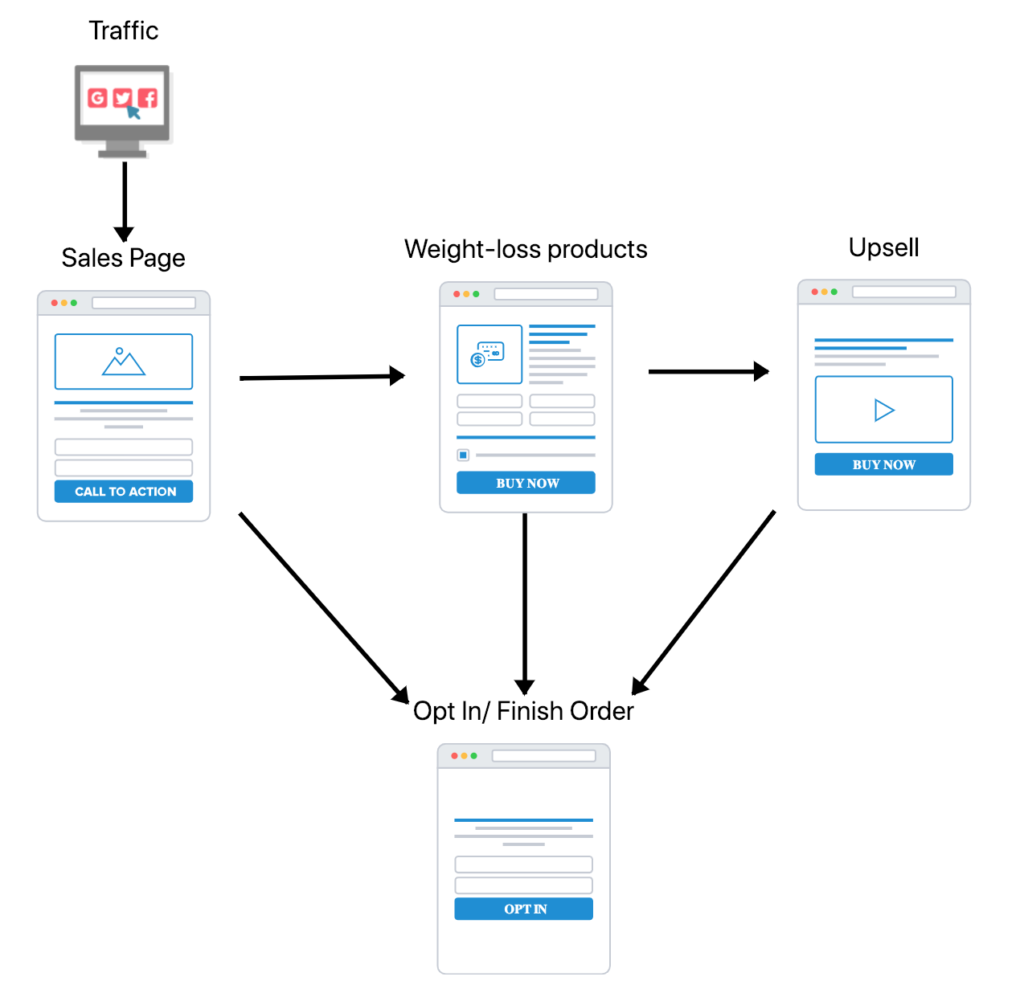If you’ve been navigating the world of sales and marketing, you’ve probably heard of the term “sales funnel.” It’s more than just jargon – it’s a fundamental concept that can significantly impact your strategy and results. Let’s dive into what a sales funnel is, why it matters, and how you can use it to enhance your business.
What is a Sales Funnel?
A sales funnel is essentially a visual representation of a customer’s journey from the moment they discover your business to the point where they make a purchase. Imagine an actual funnel: it’s wide at the top and narrows towards the bottom. That’s exactly how a sales funnel works. You start with a broad audience at the top, and as potential customers progress, the number narrows down until only the most qualified leads turn into customers.
Why does this matter? Because understanding these stages can help you tailor your approach to fit where your potential customers are in their journey. Let’s explore each stage in detail.

The Key Stages of a Sales Funnel
1. Awareness: The Beginning of the Journey
At this stage, potential customers are becoming aware of a problem they have or a solution they need. They might stumble upon your brand through social media posts, ads, blog content, or word of mouth. Your goal here is to cast a wide net and capture as many leads as possible. Think of this as your first impression — and we all know how important that is!
2. Interest: Building Engagement
Here, prospects are showing interest in what you offer. They’re no longer strangers to your brand; they’re curious and want to learn more. This is your chance to provide value. You can engage them through targeted content like newsletters, educational blog posts, or free resources (like guides or webinars). Your aim is to establish credibility and build a relationship.
3. Consideration: Weighing the Options
This stage is where your prospects are doing their homework. They’re actively comparing your solution to other options in the market. Maybe they’re checking out reviews, reading case studies, or attending your product demos. Your task here is to make it easy for them to see why you’re the best fit. Show off your unique selling points and offer social proof like testimonials and success stories.
4. Intent: Showing Signs of Purchase
Now, things are getting serious. At this stage, prospects are indicating a strong intent to buy. They might be clicking on pricing pages, signing up for a free trial, or adding items to their cart. It’s crucial to pay attention to these signals and act fast. Personalized follow-ups, special offers, or limited-time discounts can be game-changers to push them towards the next step.

5. Decision: The Final Step to Conversion
Congratulations — you’re at the bottom of the funnel! Your prospects are ready to make a purchase decision. This is where your sales team needs to shine. Provide clarity on pricing, answer any last-minute questions, and make the checkout process smooth and straightforward. Sometimes a nudge like free shipping or a bonus offer can seal the deal.
6. Retention: Beyond the Funnel
Don’t make the mistake of thinking the funnel ends with the sale. A smart business knows that retaining customers is just as important as acquiring them. Repeat customers are more likely to spend more and recommend your brand. Build loyalty through personalized thank-you messages, exclusive deals, or post-purchase support. Your focus here should be on making customers feel valued and appreciated.
Why Understanding the Sales Funnel Matters
So, why is it crucial to know these stages and what to do at each one? Well, it allows you to optimize your marketing efforts, focus your resources, and provide a tailored experience for potential customers. When you know where your prospects are in the funnel, you can offer relevant content, reach out at the right time, and increase your chances of turning them into loyal customers.
A sales funnel also helps you pinpoint weak spots. Are prospects dropping off during the consideration stage? Maybe your competitors are offering something more compelling. Are you losing customers right before checkout? It might be time to refine your checkout process. By understanding the funnel, you gain clarity on where you can improve and optimize.
How to Build an Effective Sales Funnel
- Identify Your Audience: Understand who your ideal customers are, their pain points, and what motivates them to buy.
- Create Valuable Content: Align your content with each stage of the funnel. For awareness, focus on educational material. For consideration, highlight case studies or comparisons.
- Use Lead Magnets: Offer something valuable in exchange for their contact information, such as free guides, ebooks, or consultations.
- Nurture Your Leads: Utilize email marketing or retargeting ads to stay top-of-mind with leads.
- Close the Sale: Train your sales team to recognize buying signals and use effective tactics to convert leads.
- Analyze and Refine: Consistently measure your funnel’s performance and look for areas to improve.

Wrapping Up
The concept of a sales funnel isn’t just a buzzword — it’s a blueprint for creating a seamless customer journey. By understanding and leveraging each stage of the funnel, you can tailor your approach to fit your customers’ needs and guide them towards a purchase. A well-structured sales funnel doesn’t just help you attract more customers; it helps you create a better experience for them.
Ready to start building your sales funnel? Remember to focus on your audience, provide valuable content, and keep refining your approach. When done right, your funnel can become one of the most powerful tools in your business toolkit. Happy funneling! 🚀